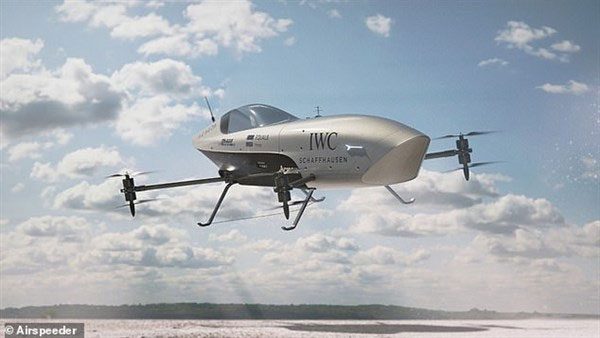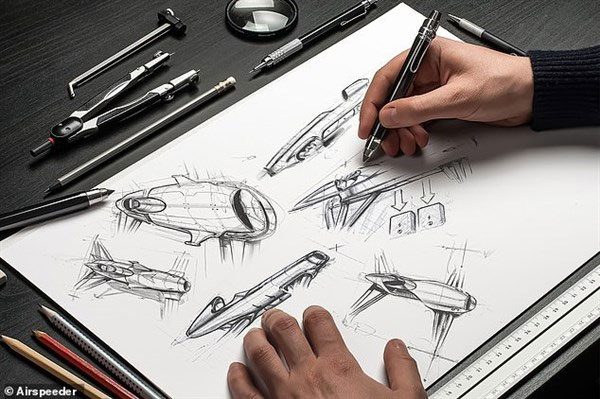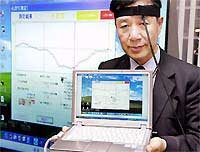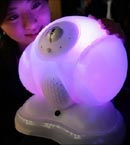The world’s first flying racing car named Airespeeder can accelerate from 0 to 100 km/h in just 2.8 seconds and is set to go into production before this summer.
10 of these flying racing cars are currently being assembled by Alauda Aeronautics in the city of Adelaide, Australia.
The Perfect Combination
Completely electric and capable of being remotely controlled, Airspeeders are expected to participate in races across three continents in the coming months.

The flying racing car can accelerate from 0 to 100 km/h in 2.8 seconds.
This flying racing car features 8 propellers surrounding a cockpit made of carbon fiber and can reach a maximum speed of 120 km/h. Currently, the production cost of this flying racing car remains confidential. According to developers, racing applications will help accelerate the development of flying vehicles and implement this technology more rapidly.
This statement comes just three months after a prototype Airspeeder lost control at Goodwood Airport in West Sussex, England. It was remotely controlled and flew at an altitude of over 2,400 meters above Gatwick Airport’s runway before crashing in Chichester.
The founder of Alauda Aeronautics, Mathew Pearson, stated that some of the first cars from Mercedes, Bentley, and Renault were racing vehicles. “These pioneering brands understood that to drive a revolution in mobility, they had to create their machines for racing purposes.”
“With Airspeeder, we take pride in echoing this philosophy. To expedite the emergence of advanced air mobility technology, we must promote competition in sports,” he added.
“Airspeeder Mk3 is the result of years of technical research, testing, and development with the sole purpose of creating the highest-performing electric flying vehicle,” Mathew Pearson further explained.
According to developers, the design of Airspeeder is a combination of a helicopter, a fighter jet, and a Formula 1 car. It features a cockpit inspired by Formula 1 cars with a structure that allows for flying “at the absolute limit.”
“My first principle is that these Speeders must first be racing vehicles,” said Felix Pierron, Head of Design at Airspeeder and Alauda Aeronautics.
“In forming the design approach, I explored classic racing car styles from the 1950s and 60s. This was a time when aesthetics were demanded to be on par with technology and aerodynamics,” Felix Pierron noted.
“As a designer, the beginning is always the most exciting. I am thrilled to see something that starts as a vision on paper take to the skies. My dreams are no longer just mine; they have now become an incredible reality to inspire the world,” he said.

The design of the flying racing car combines elements of helicopters, fighter jets, and Formula 1 cars.
A Leap Forward in Technology
The Airspeeder Mk3 will feature unprecedented capabilities in electric vehicles, capable of vertical takeoff and landing, including a collision avoidance system based on LiDAR and radar that will create a “virtual force field” around the vehicle to ensure safe racing.
Developers state that based on the Mk2 version, the upgraded flying racing car will be powered by redesigned batteries, providing 90% more power while only increasing weight by 50%.
The Mk3 features a carbon fiber frame and body, as this material is strong, durable, and lightweight, ensuring agility and efficient operation. The carbon fiber structure adds an important layer of mechanical safety. It will be further reinforced in the Mk4 version with a fully integrated carbon fiber body.
The vehicle’s configuration also incorporates important redundancy measures, ensuring that the car can land safely and remain under control if any rotors or battery systems fail.
Additionally, the batteries can be fine-tuned to provide different power distribution configurations depending on the requirements of a specific racetrack, for example, to better adapt to curves and inclines or to focus more on speed on straightaways.
An innovative “slide and lock” system in the Mk3 design will allow for quick battery removal and replacement during pit stops in the race. Developers of this program indicate that battery change times have been reduced to just 14 seconds.
The ground team will also be able to monitor the status of the Airspeeder during races thanks to a modern remote measurement system that allows for the recovery of terabytes of data from sensors located throughout the flying vehicle.
“This is pure innovation. We are no longer constrained by four wheels or a square frame. We are leading a completely new trend, which is flying racing cars. I am proud to fulfill the responsibility of creating machines as beautiful as their purpose,” explained Pierron.
According to Alauda Aeronautics, the Airspeeder Mk3 represents a “huge leap in technology” in the development of the world’s first electric flying racing vehicle.
This remotely controlled vehicle is the final iteration of an electric racing car before the introduction of the piloted racing vehicle, the Airspeeder Mk4, expected to debut in 2022.
| The Mk3 Airspeeder weighs 130 kg with a carbon fiber shell and 8 propellers that provide stability, even in the event of one propeller failure. It features easily replaceable batteries and can distribute and adjust power according to the requirements of a racetrack.
The Mk3 Airspeeder can deliver a maximum power of 320 kW and lift a weight of 80 kg. The Mk3 Airspeeder can turn much faster than traditional fixed-wing aircraft or helicopters, with a thrust-to-weight ratio three times that of one of the world’s most advanced fighter jets, the F-15E Strike Eagle. |


















































